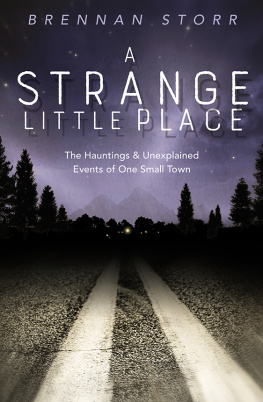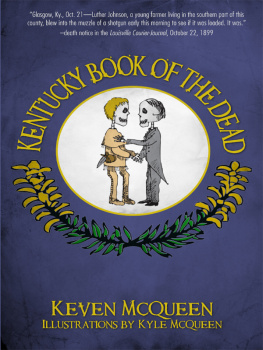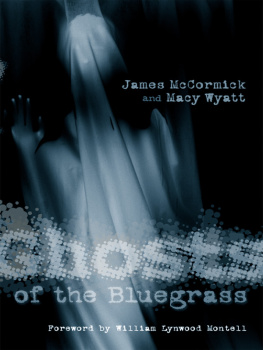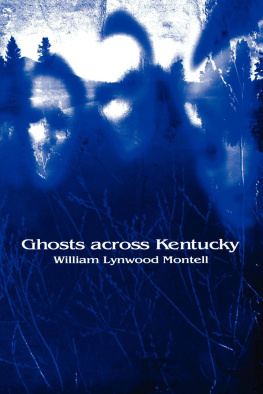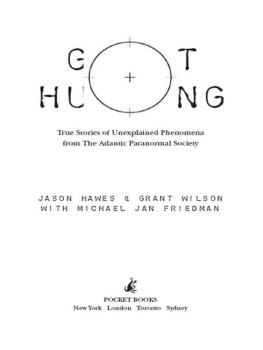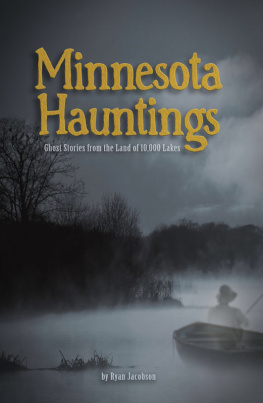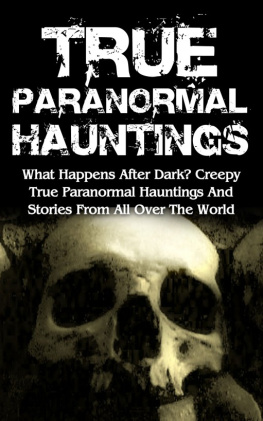Kentucky Hauntings
Homespun Ghost Stories and Unexplained History
ROBERTA SIMPSON BROWN AND LONNIE E. BROWN
Copyright 2013 by The University Press of Kentucky
Scholarly publisher for the Commonwealth,
serving Bellarmine University, Berea College, Centre
College of Kentucky, Eastern Kentucky University,
The Filson Historical Society, Georgetown College,
Kentucky Historical Society, Kentucky State University,
Morehead State University, Murray State University,
Northern Kentucky University, Transylvania University,
University of Kentucky, University of Louisville,
and Western Kentucky University.
All rights reserved.
Editorial and Sales Offices: The University Press of Kentucky
663 South Limestone Street, Lexington, Kentucky 40508-4008
www.kentuckypress.com
Library of Congress Cataloging-in-Publication Data
Brown, Roberta Simpson, 1939
Kentucky hauntings : homespun ghost stories and unexplained history / Roberta Simpson Brown and Lonnie E. Brown.
pages cm
ISBN 978-0-8131-4320-0 (hardcover : alk. paper)
ISBN 978-0-8131-4382-8 (epub) ISBN 978-0-8131-4383-5 (pdf)
1. Haunted placesKentucky. 2. GhostsKentucky. I. Brown, Lonnie E. II. Title.
BF1472.U6B7756 2013
133.109769dc23
2013018934
This book is printed on acid-free paper meeting the requirements of the American National Standard for Permanence in Paper for Printed Library Materials.
Manufactured in the United States of America.
 | Member of the Association of American University Presses |
To our families and friends, here and on the other side, who gave us a love of stories.
And to the late John C. Ferguson, a great friend, storyteller, and writer. We thank his wonderful family for sharing him with us.
Introduction
A re you ready for some smiles and shivers? The stories in this book will bring you both. In the tradition of Kentucky storytelling, we have included stories that are fun for all ages. We are fortunate to have grown up in a culture that still has storytellers who know the importance of passing stories from one generation to the next. Read these stories, but take them from the page to your imagination. Put them into your own words, and pass them on. In this way you can help these stories from history, headlines, and homefolks live forever.
We are often asked why we enjoy ghost stories and paranormal stories so much. Our answer is simply that they are exciting and fun! The love we had for them as children has carried over into our adult lives.
But scary stories serve more serious purposes than simply being entertaining. They can help us deal with fear. Fear is a universal feeling. Even though we don't all share the same fears, we do share the feeling. Scary stories help us identify our fears and confront them. Only when we do this are we able to control whatever is frightening us. Sharing stories helps us explore ways to deal with our fears. Learning how someone else handles fear can give us insight on how to explore our options and deal with the scary things in our lives. It is also comforting to know that others experience unexplained things as we do, and that helps us affirm our sanity.
We are amazed at the number of people, young and old, who tell us that they have experienced some paranormal experience. Some are confused and do not know what to do. They are afraid to tell anyone else because they are afraid that they will be subjected to ridicule. When they hear or read about an experience similar to their own, they are more inclined to open up and tell about their own experiences. Sometimes, individuals approach us and say that they have a story they want us to use in a book, but more often they just want to relate whatever has been bothering them that they can't explain. They aren't interested in being published. They are only looking for answers.
Storytelling brings us together as a culture. We are close to our families and our neighbors when we sit together, tell stories, and then discuss our feelings about them. Kentucky history is rich in stories passed down from generation to generation. Our heritage lives on through these tales. Our particular area passed on ghost tales. We passed on scary tales because that is what we heard.
People enjoy a good scare, but they don't like the bad kind. A bad scare is, for example, hearing someone breaking into your house or finding yourself in danger, but helpless. A scary story allows you to experience the thrill of being scared while being able to do something about it. You can always stop reading and take a break from the story, or you can cover your ears and avoid listening. In other words, you can take a fear break and gather your courage if our stories are too scary.
The stories we tell in these pages were told to us orally, but some accounts have been published in newspapers or posted on the Internet. Although we include notes with each story on any additional sources we used, we have not copied these sources. Rather, we have simply read all we could find about the tales we share here to confirm and provide supporting details for the stories here. We want you, our readers, to feel what the characters feel in the story. Our goal is not only to present facts, but also to write a book you will enjoy reading. So start reading the stories, and bring on the smiles and the shivers.
Stories from History
I n our first years of school, we thought history was boring. The teachers we had made us memorize dates and events, but we were not told much about the real people from the past and what they did. Then, when we were in high school, we had a teacher named Mr. Tarter who told us stories that made history come alive. He was able to pull us into those stories and make us feel we were there in a time gone by. It was fascinating to study history from then on.
Another remarkable teacher named Leland Voils, in health class, also told stories, and he made health issues throughout history come alive too. He spoke of characters and events with such vivid detail that we were transported to whatever time period we were studying and we felt what those people must have felt. He was one of the best storytellers we ever met.
Stories give us glimpses into history that we could never see in timelines and strictly factual accounts. Stories paint a mental picture of daily happenings and introduce us to characters that become real in our hearts and minds.
A Chivaree Gone Bad
Roberta's grandmother, Lou Ann Simpson, told about many customs that we did not read about in history books. This is one of her stories.
The chivaree was an odd, but popular, social custom that thrived in Appalachia until the end of World II. It took place in the early evening after a wedding. It was meant originally to scare off evil spirits and to provide an occasion to have some fun with the newlywedsa kind of old-time version of the modern wedding reception.
In those days, the bride and groom usually had a home of their own to go to after the wedding. Often relatives of the couple helped build the house on land provided by the parents. Money was scarce, so there were practically no honeymoon trips. After the wedding ceremony at the church, the newly married couple would usually stay for a while and mingle with family and friends, who provided food and drinks for the occasion. Then the newlyweds would go to their new house to start their life together


